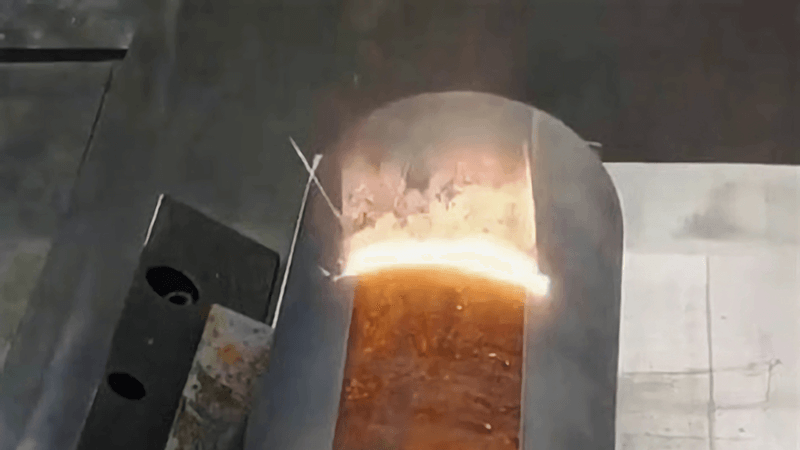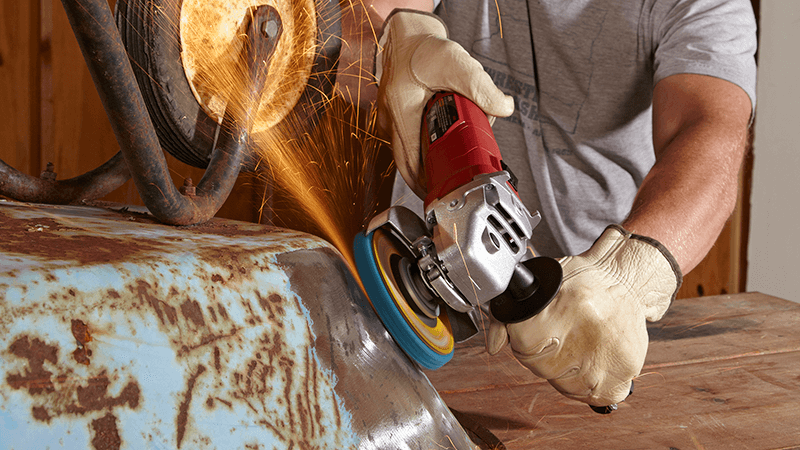Rust weakens metal, wastes resources, and slows production. Sandblasting and chemicals are messy, costly, and damaging. Many engineers feel trapped by these methods. But there is a cleaner, faster, and safer way to solve the rust problem.
Yes, you can use a laser to remove rust from metal. Laser cleaning machines vaporize corrosion without abrasives or chemicals, leaving the base material intact and production lines cleaner and faster.
When I first saw a laser cleaning machine at work, I realized this was the tool maintenance engineers had been waiting for. No dust, no residue, just pure precision. That moment changed how I look at rust removal forever.

How do you remove rust without sandblasting?
I used to spend hours watching sandblasting create dust clouds, choke filters, and wear down components. The frustration was real. I needed something that avoided abrasives and saved my clients from constant cleanup.
Rust can be removed without sandblasting by using laser cleaning machines. These machines emit high-energy laser pulses that break down rust and oxides, leaving the clean metal surface untouched and without creating secondary waste.
Why Lasers Beat Sandblasting
Sandblasting erodes the base material and requires constant media replacement. Laser cleaning1 uses light, not grit, so nothing wears down. The machine targets only rust.
A Cleaner Process
No dust storms. No sand piles. Just rust turned into vapor that gets safely collected. Maintenance teams breathe easier and production floors stay clean.
Efficiency Gains
I once worked with a factory losing days to sandblasting2 cleanup. When they switched to a Kirin Laser cleaning machine, they cut downtime in half.
| Method | Material Damage | Waste Produced | Maintenance Required |
|---|---|---|---|
| Sandblasting | High | Abrasive dust | Frequent |
| Laser Cleaning | None | Vapor only | Minimal |
This shift made their workflow smoother, their workspace safer, and their output faster.

How does a laser rust removal gun work?
At first, I wondered how a beam of light could strip off something as stubborn as rust. It seemed impossible until I saw it in action. The results were instant and stunning.
A laser rust removal gun works by sending pulsed laser light onto the rust layer. The energy causes rust to absorb heat and vaporize instantly, while the base metal reflects the beam, staying unharmed.
Selective Absorption
Rust absorbs the laser wavelength differently than clean metal. This means the rust heats, breaks down, and vanishes, while the solid metal remains untouched.
Safe for Precision Components
I’ve seen laser cleaning machines3 vaporize rust on precision components faster than sandblasting, with zero media residue and no damage to the base metal—exactly what maintenance engineers crave.
Portability and Flexibility
The handheld laser gun gives technicians freedom. They move around parts, treat tricky angles, and finish faster without setup or teardown.
| Feature | Benefit for Operators |
|---|---|
| Pulsed Laser Beam | Removes rust layer selectively |
| Non-contact Process | No wear on machine or metal |
| Handheld Design | Easy to use on-site or in shop |
Once I watched a maintenance team use a handheld laser gun4. In minutes, a corroded gear looked like new metal. No dust, no abrasion, just clean results.

What type of laser removes rust?
When clients ask me this, they want clarity. They want to know if they need something exotic or dangerous. The truth is simpler than they think.
Fiber lasers are the most effective for rust removal. They deliver high peak power, short pulses, and the right wavelength that rust absorbs easily, while leaving the base metal intact.
Why Fiber Lasers Work Best
Fiber lasers5 offer efficiency and durability. They handle long work cycles and tough rust layers. Other laser types can work, but none match the balance of cost, lifespan, and precision.
Power Options
Low-power models handle surface cleaning. High-power models cut through thicker corrosion. Kirin Laser6 machines offer both, depending on industrial needs.
Long-Term Investment
Fiber lasers last longer than CO₂ or YAG systems. They require less maintenance, which saves money and downtime.
| Laser Type | Rust Removal Ability | Efficiency | Lifespan |
|---|---|---|---|
| Fiber | Excellent | High | Long |
| CO₂ | Limited | Medium | Medium |
| YAG | Moderate | Low | Short |
When I advise clients, I always guide them to fiber laser machines. They give the most reliable results and fit perfectly in industrial workflows.

How to permanently remove rust?
I once met a client who was tired of “temporary fixes.” Sandblasting looked good for a week, then rust returned. He needed a way to not just remove rust, but keep it from coming back.
To permanently remove rust, you must clean the surface completely and prepare it for protective coatings. Laser cleaning machines remove all oxides and residues, leaving a clean surface ready for painting, plating, or sealing.
Complete Surface Preparation
Laser cleaning does more than strip rust. It prepares metal for the next step. Coatings bond better to a laser-cleaned surface than one blasted with abrasives.
No Hidden Residues
Sandblasting leaves dust trapped in pores. Chemicals leave residues that weaken coatings. Laser cleaning leaves nothing but clean, bond-ready metal.
Real-World Example
One client came to me frustrated with constant downtime—his parts rusted fast, and sandblasting7 left abrasive dust everywhere. We set him up with a laser cleaning machine. Suddenly, he was removing rust cleanly without shutting down production. No mess, no wear on the parts—just smooth metal ready for work.
| Step | How Laser Cleaning Helps |
|---|---|
| Rust Removal | Strips rust completely |
| Surface Activation | Creates a bond-ready finish |
| Coating Application | Paint, plating, or sealing sticks |
Now his machines run longer without rust returns, and his maintenance costs dropped. That is how laser cleaning8 turns a temporary fix into a permanent solution.

Conclusion
Laser cleaning machines9 change how we fight rust. They remove corrosion without sand, chemicals, or damage. They prepare metal for coatings and keep production clean. For me, the real difference is peace of mind: no waste, no wear, and no worries. That is why Kirin Laser machines are the right answer for rust removal.
-
Explore the advantages of laser cleaning to understand how it enhances efficiency and safety in industrial applications. ↩
-
Learn why sandblasting may not be the best choice for industrial cleaning and discover more effective alternatives. ↩
-
Explore how laser cleaning machines can efficiently remove rust without damaging precision components, enhancing maintenance processes. ↩
-
Discover the advantages of using a handheld laser gun for rust removal, including portability and ease of use in various settings. ↩
-
Explore this link to understand the unique advantages of fiber lasers in industrial settings, including efficiency and durability. ↩
-
Discover how Kirin Laser machines can meet diverse industrial needs with their powerful options for rust removal. ↩
-
Discover the differences between sandblasting and laser cleaning, and why laser methods may be more effective. ↩
-
Explore this link to understand how laser cleaning enhances surface preparation and improves coating adhesion. ↩
-
Find the best laser cleaning machine and laser cleaning solutions from Kirin Laser, clicking this link to get all your needs for your business. ↩





